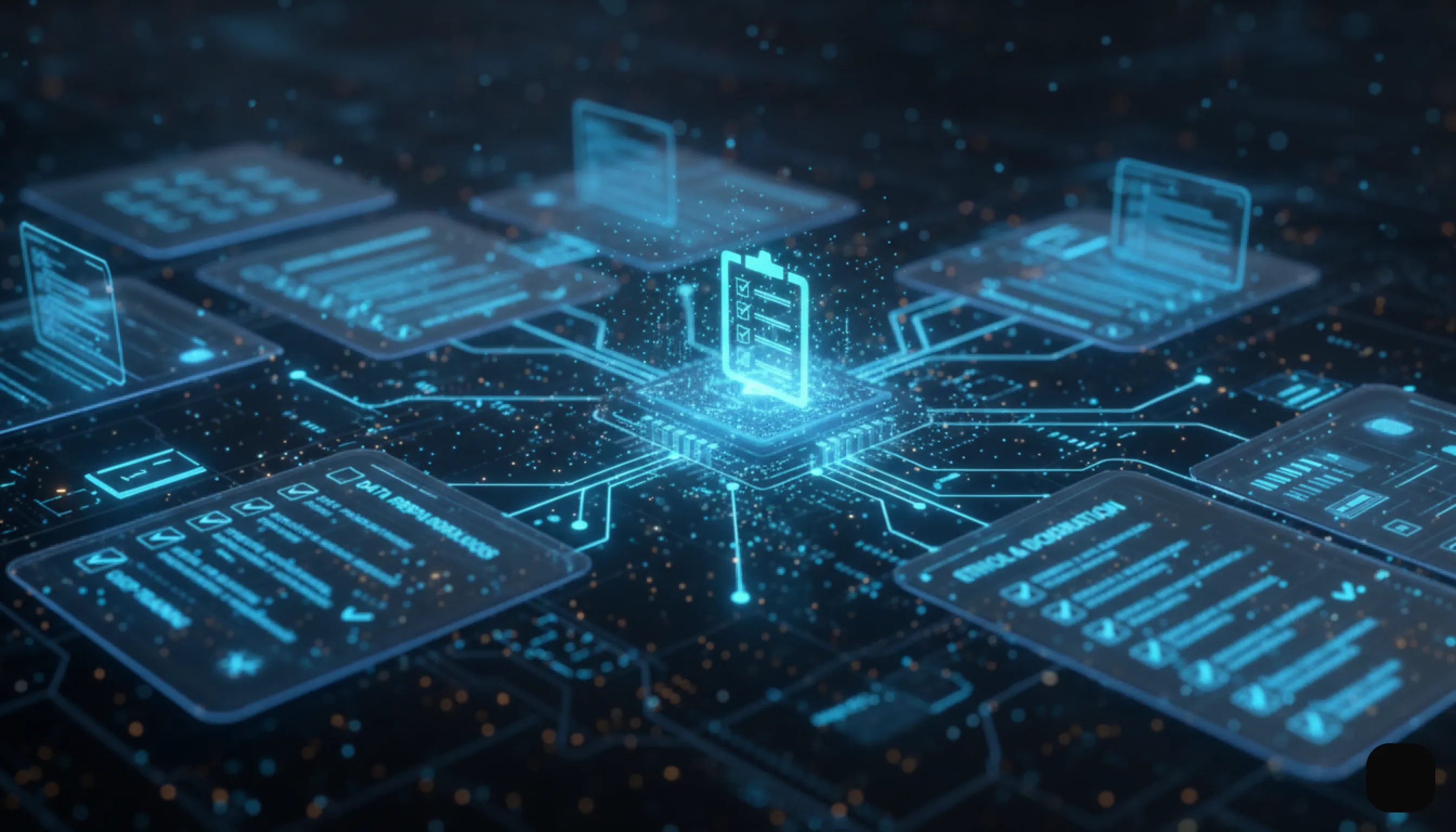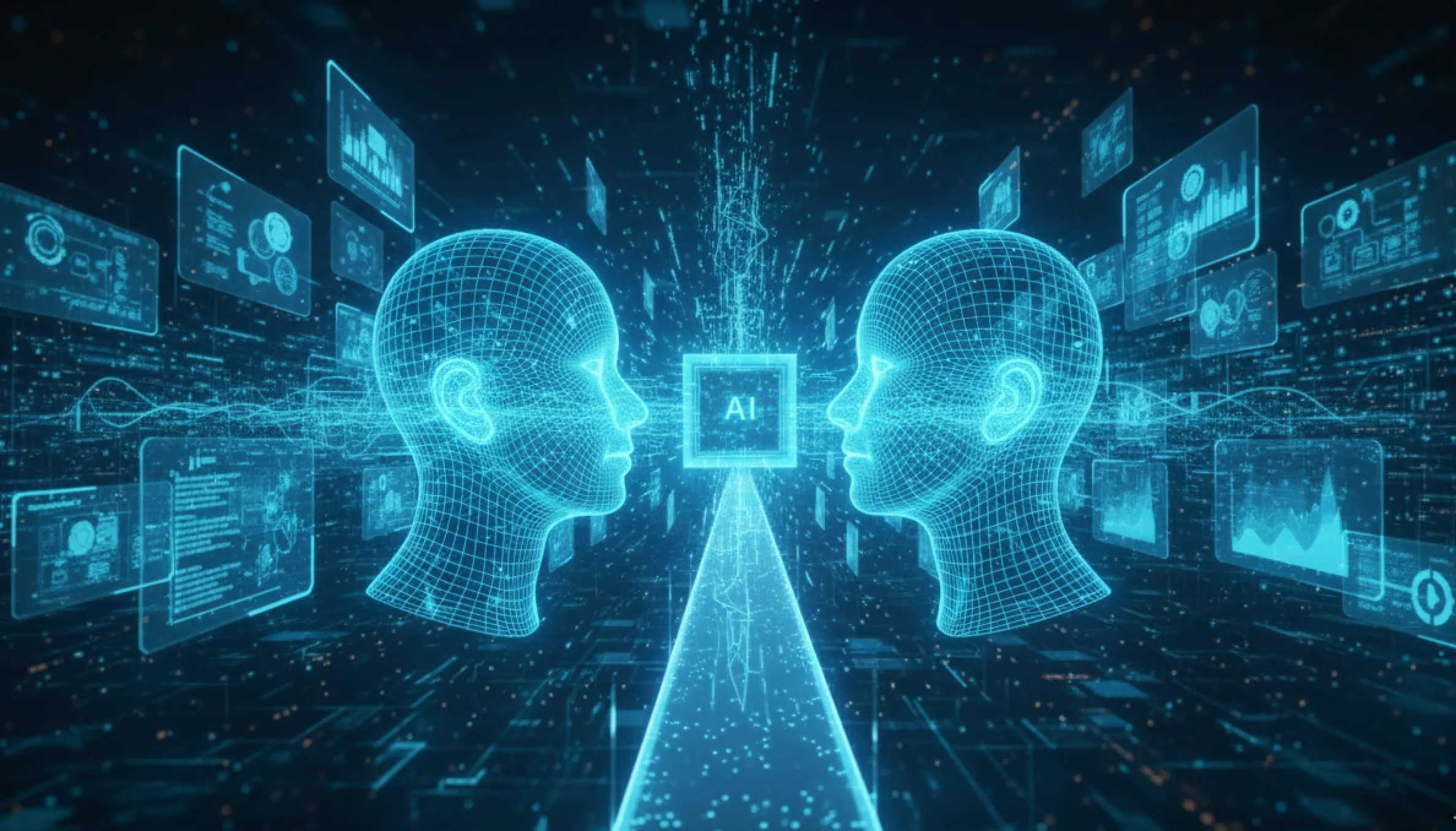Back to Blog
Automate for Scale: Unlocking Efficiency with AI-Powered Workflows
Repetitive, manual tasks are the hidden tax on business productivity.

Repetitive, manual tasks are the hidden tax on business productivity. From data entry and report generation to invoice processing and customer support, these daily activities consume valuable employee hours that could be better spent on strategic, high-value work. Traditional automation has certainly helped, but AI-powered automation takes efficiency to an entirely new level.
Unlike rule-based automation, which follows a rigid set of instructions, AI-powered automation can learn, adapt, and make intelligent decisions. It can handle unstructured data, understand natural language, and optimize complex workflows, transforming entire business processes. This is not about simply doing the same tasks faster; it's about reimagining what's possible, allowing businesses to truly automate for scale.
By unlocking efficiency with AI-powered workflows, businesses can free their most valuable asset—their people—to focus on innovation, problem-solving, and human connection. This leads to not only a significant boost in productivity and a reduction in operational costs but also an increase in employee satisfaction and a stronger competitive position.
This article will explore the transformative power of AI-powered automation. We will discuss its key benefits, showcase real-world use cases, and provide insights into how your organization can start its journey toward a more efficient and scalable future.
Beyond Basic Automation: The AI Advantage
Traditional automation, often seen in Robotic Process Automation (RPA), excels at mimicking human actions for predefined, rule-based tasks. It's excellent for fixed processes like entering data into a specific field or generating a standard report. However, its limitations become apparent when workflows involve:
- Unstructured Data: Emails, documents, voice recordings, and images.
- Variable Decisions: Tasks requiring judgment or pattern recognition.
- Adaptability: Processes that frequently change or require learning.
This is where AI steps in. AI-powered automation leverages machine learning, natural language processing, and computer vision to handle the "messy" parts of business processes. It can understand context, interpret intent, and make intelligent decisions, extending automation to previously intractable areas.
The Hidden Costs of Manual Workflows
Many organizations underestimate the true cost of relying on manual processes. These costs extend far beyond just employee salaries:
- Reduced Productivity: Time spent on repetitive tasks takes away from strategic work.
- Error Rates: Human error, fatigue, and inconsistencies lead to mistakes that are costly to correct.
- Slow Processing: Manual approvals and data handling create bottlenecks, impacting speed to market and customer satisfaction.
- Employee Dissatisfaction: Repetitive tasks are monotonous, leading to burnout and high turnover in roles primarily focused on such work.
- Lack of Scalability: Manual processes don't scale efficiently with business growth, leading to increased operational complexity and costs.
How AI Transforms Workflow Automation
AI supercharges automation by introducing intelligence, adaptability, and predictive capabilities into business processes.
- Intelligent Document Processing (IDP): AI can extract data from invoices, contracts, and forms regardless of their format, eliminating manual data entry.
- Predictive Maintenance: Using ML to analyze sensor data, AI can predict equipment failures before they happen, optimizing maintenance schedules and reducing downtime.
- Enhanced Customer Service: AI-powered virtual agents can handle complex customer queries, route requests to the right department, and personalize interactions based on sentiment analysis.
- Supply Chain Optimization: AI can analyze vast datasets to predict demand fluctuations, optimize inventory levels, and streamline logistics, making supply chains more resilient and efficient.
Real-World Impact: AI in Action

Imagine a financial services firm where loan applications, traditionally processed by teams manually reviewing documents and verifying data, are now instantly analyzed by an AI. The AI not only extracts relevant information but also cross-references it with databases, flags discrepancies, and even assesses risk levels, all in a fraction of the time. Human employees then focus on complex cases or customer relationships, not paperwork. This frees up resources, accelerates service delivery, and significantly reduces operational costs.
In manufacturing, AI-powered systems monitor hundreds of data points from machinery, predicting component failures with remarkable accuracy. This allows for proactive maintenance, avoiding costly unexpected breakdowns and maximizing uptime, directly impacting profitability.
Implementing AI-Powered Automation: A Strategic Approach
To successfully implement AI-powered workflows, consider these key steps:
- Identify High-Impact Areas: Start by targeting processes that are highly repetitive, prone to error, or create significant bottlenecks.
- Pilot Projects: Begin with small, manageable pilot projects to demonstrate value, refine the solution, and build internal confidence.
- Data Readiness: Ensure your data is clean, structured, and accessible. AI thrives on high-quality data.
- Human-AI Collaboration: Design workflows that leverage AI for efficiency while keeping humans in the loop for oversight, judgment, and complex decision-making.
- Continuous Optimization: AI models improve with more data and feedback. Establish a process for ongoing monitoring, refinement, and adaptation.
Conclusion: Building a Scalable, Efficient Future
The future of business efficiency is undeniably linked to AI-powered automation. By intelligently automating complex and data-intensive workflows, organizations can transcend the limitations of traditional methods, unlock unprecedented levels of productivity, and achieve genuine scalability. This isn't merely about saving costs; it's about empowering your workforce, accelerating innovation, and building a more agile, resilient enterprise ready to thrive in the digital age.
In this article




